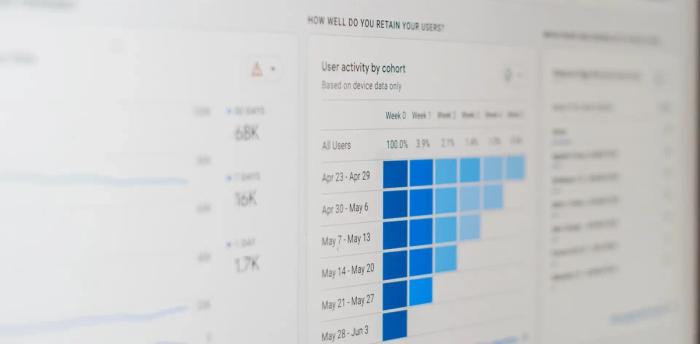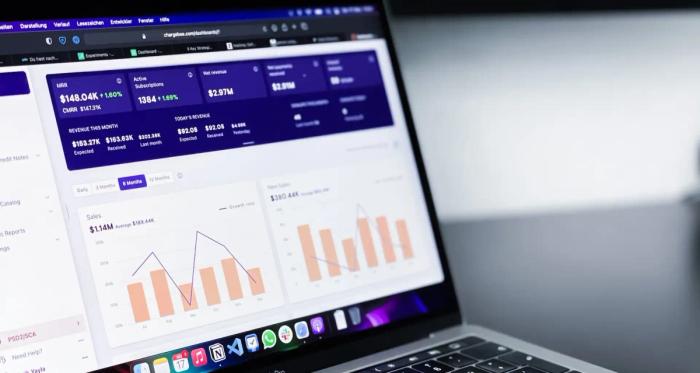It's 2024 and marketing budgets are getting slashed across a range of industries. The cost of acquiring new customers is soaring, and advertising costs on platforms are going through the roof.
AI is changing the game everywhere you look. Marketing is in a pretty tough position, and now more than ever before, it needs to prove its return on investment (ROI). The best way to do that - tracking marketing metrics.
Digital marketing metrics or KPIs are the benchmarks that show whether your marketing campaign is a win or a fail. But as any marketer knows, choosing the right kind of metrics makes all the difference. Choose the wrong ones, and even a top-performing campaign can seem lackluster.
What are digital marketing metrics?
A marketing metric or a KPI, is a value that shows how well your marketing efforts are paying off. It's a numerical value that helps marketers understand whether a campaign is performing well or not. Moreover, it shows them if something needs fixing and how it should be fixed.

The choice of your marketing metrics largely depends on the type of industry you're in and the marketing strategies and channels that you're using. For example, in B2B SaaS, customer lifetime value and churn are crucial. The same metrics however won’t matter as much to a marketing team to a B2C business.
Why are digital marketing metrics important?
Besides the obvious answers such as proving the ROI of your marketing performance, there are a handful of other reasons why tracking marketing KPIs matters. And this is not just for your marketing team - it's for the entire business.
- More informed decision-making - you can determine which marketing channels and tactics provide the best return on investment. This can guide your future workload and marketing spend.
- Tracking goals - determine how marketing performance is aligning with the overall company goals.
- Optimizing marketing tactics and budgets - changing variables in order to increase results, e.g. changing ad copy to get a better conversion rate from paid ads.
- Competitive analysis - using analytics tools to determine how you're performing against your competitors, e.g. in organic search.
- Accountability and earning a seat at the table - keep the marketing department accountable and help them get leverage when making important company decisions.
In short, it's not just about measuring campaign success. Marketing metrics help your business become more data-driven and benefit not just your sales and marketing teams, but all of your whole company.
Examples of marketing metrics you should track
Marketing in 2024 is all about being data-driven. Teams that track and analyze their performance not only have an easier time getting more marketing budget but also driving results. Here are some of the top metrics your team should be tracking.
Customer acquisition cost (CAC)
This is the overall cost of acquiring new customers. This includes costs for creating quality content, paying platforms such as Facebook to promote your post, the cost of the sales team talking to a lead, as well as the costs of salaries for your marketing team.
This is one of the most important metrics to track. If CAC is too large then, then business costs could quickly get out of hand. Ideally, your CAC should be as low as possible, and lower than your customer lifetime value.
Conversion rate
The backbone of every digital marketing campaign is conversions. While this is a crucial metric, it's also a troublesome one.
A conversion can be just about any action a potential customer makes in your sales funnel. Examples include:
- booking a demo
- subscribing to a free trial
- subscribing to your email list
- converting from a free to a paid account
- downloading a lead magnet about your product or service
Even the most basic marketing automation platform can provide details about conversion rates. The hard part is determining what a relevant conversion is.
Customer lifetime value (LTV)
In B2B marketing, customer lifetime value is the total amount of money a customer spends with your business before churning for whatever reason. The longer someone stays a customer, the more value you provide with your product. Also, the better your overall budget and long-term prospects for your business.
Lifetime value is crucial in itself, but it has a new perspective when compared with other metrics. The ratio of customer acquisition costs and lifetime value is the lifeblood of your business. If the costs of acquiring a customer are higher than the money the customer pays during their time with your business, it can lead to you bleeding money rather than piling it up.
Lead generation
Marketers in 2024 should not only be familiar with what leads are, but also be able to classify them to better measure their campaign's success. A lead is any individual or organization interested in what you're selling. Powerful marketing attracts all types of leads. But marketing isn't guessing, and having more information about leads can help both you and your sales team.
Here are the main types of leads you should differentiate:
- marketing qualified leads (MQLs)
- sales qualified leads (SQLs)
- information qualified leads (IQLs)
Depending on how ready the individual is to make a purchase, they can be placed in one of these three buckets. Lead qualification can help your acquisition strategy because you can make informed decisions about who you can sell to and whom you need to nurture more before a sale.
Return on marketing investment (ROMI)
One of the best metrics for CEOs and upper management is ROMI. This metric shows how much marketing dollars you're spending and what you're getting in return. In short, you need this number to be as high as possible. For example, a 200% ROMI on paid social is an enviable result. However, compared to 500% ROMI on organic social media, is minimal.
ROMI is not only great for evaluating your entire marketing strategy, it also provides a granular overview of your marketing activities. It compares the performance of different channels to find the ones that perform best.
Organic traffic/organic sessions
Despite a cut in marketing budgets, one channel that consistently delivers a high return on investment is content marketing or SEO. By creating high quality content for your target audience, you'll be able to stand out in search engine results pages (SERPs).

Besides being cost-effective, content marketing has another major advantage: it's suitable for all stages of the sales funnel. You can inform potential customers, help them compare your product against the competition and show them how it solves their pain points.
You can get marketing data about organic traffic from free tools like Google Analytics, without using a complex paid dashboard.
Return on advertising spend (ROAS)
If you run paid campaigns, this is the most important number of all your available data. ROAS is how much return you can generate from the amount of money you spend. In other words, if you spend $1 on an ad on social media or Google Ads and you get $2 from the campaign, that means your ROAS is 2.
ROAS can be calculated across marketing channels, such as paid social and PPC through Google Ads. More importantly, this metric allows comparison against campaigns. This way, you can make changes in the call to action (CTA), the copy or the targeting.
Keyword rankings
If website traffic is your primary concern, you need to monitor your keywords carefully. Website visitors come to you from organic sources usually by searching for relevant keywords on search engines such as Google or Bing.
You'll need to monitor two things:
- The keyword movements for the keywords you're already ranking for
- New keywords you're ranking for after publishing new content
By keeping your finger on the pulse with keywords, you'll be able to see whether your SEO and content marketing campaigns are paying off or not. Most good SEO software allows you to do just this, but you can get by with Google Search Console for starters.
Email open rate
There are many email marketing metrics you can track, but the open rate is arguably the most important. Sure, it's important that as many people receive an email as possible but it's more important that emails get read and opened.
The email open rate shows the percentage of people that open the emails they receive. When you track and measure open rates, you get actionable insights on how to improve your campaigns. For example, better targeting, improved subject lines, better times to send out your email campaigns and more.
Email click-through rate
At this point, you know how many people are opening your emails but click-through rate shows you how many of the people actively interact with the included links. This is a crucial piece of information if you want to reach business objectives through email marketing as a channel.
The link in your email could lead to your product page, blog post, home page, sign-up page for your free trial, or something else. If you want to track email campaign performance, this is the second most important metric you should be tracking.
What are the best marketing metrics to use for my business?
The best answer is one you might not like - it depends. The metrics above are just some of possible options, but they are in no means metrics that every business should use. You should personalize your choice and adapt it to your own campaigns and business goals, as well as emerging marketing trends.

For example, if email marketing is your most used channel, metrics relating to paid ads and social media won't be as important to you.
Determine your most important business goals and choose your metrics accordingly.
Streamline marketing and sales with the right CRM tool
Data collection is just a part of your marketing and sales activities. To attract customers, you need marketing, but to engage with them and actually make them purchase, you need more than marketing tools.
You need a customer relationship management tool to store all of your contacts according to their lead qualification and use personalization to reach out to them.
You need Capsule CRM - a CRM that is easy to use for sales and marketing teams. Get started today with your 14 day free trial.




